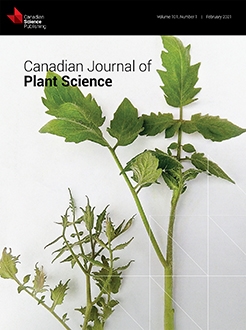The foliar chemicals in potatoes (Solanum tuberosum L.) could affect the growth and development of agricultural pests, such as Colorado potato beetle Leptinotarsa decemlineata (Say) and aphid Macrosiphum euphorbiae (Thomas). Thus, altering the chemical composition of potato leaves could potentially supplement integrated pest management (IPM). In this study, field experiments were conducted in Quebec, Canada, to investigate the effects of nitrogen (N) rate and source on foliar sugar, glycoalkaloid, and amino acid concentrations and tuber yield of potato cultivar Russet Burbank. Three N fertilizer sources of ammonium nitrate, ammonium sulfate, and polymer-coated urea were used at four rates of 60, 120, 200, and 280 kg N ha−1 plus an unfertilized control in a randomized complete block design. The fourth leaves from the top of 20 randomly selected plants in each plot were collected at 54, 68, and 82 d after planting for sugar, glycoalkaloid, and amino acid analysis. Tubers were collected at harvest, and the total and marketable yields were determined. Results showed that N fertilization linearly decreased sugar concentrations and these reduced sugars were conveyed and stored in tubers as starch. Glycoalkaloid concentrations in leaves were influenced by N source and rate. Both total and marketable yields quadratically varied with increasing N rates regardless of N sources, with average values of 36.4 and 28.3 Mg ha−1, respectively. As N rate affected potato foliar chemical composition and tuber yield, N fertilization could be considered as a supplemental tool to the IPM strategy for potato pest control.
BioOne.org will be down briefly for maintenance on 14 May 2025 between 18:00-22:00 Pacific Time US. We apologize for any inconvenience.
How to translate text using browser tools
27 July 2020
Nitrogen rate and source effects on foliar sugar, glycoalkaloid, and amino acid composition of potato Russet Burbank
Guoqi Wen,
Athyna N. Cambouris,
Noura Ziadi,
Annick Bertrand,
Mohamed Khelifi
ACCESS THE FULL ARTICLE
It is not available for individual sale.
This article is only available to subscribers.
It is not available for individual sale.
It is not available for individual sale.
herbivorous pest
nutrition
secondary metabolites
Solanum tuberosum L.





